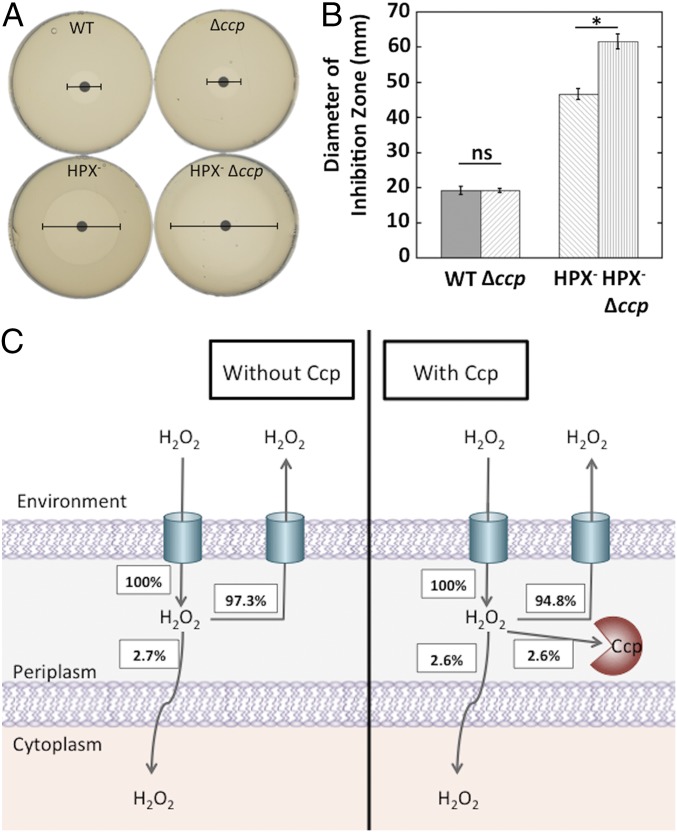Fig. 5.
Ccp cannot protect the cytoplasm from exogenous H2O2. (A) Wild-type (MG1655), Δccp (MK416), Hpx− (LC106), and Hpx− Δccp (MK146) mutant cells were grown to OD600 ∼0.1 and spread on a plate. Disks soaked in H2O2 were put on the plate, and the diameter of zone of inhibition was measured after 24 h. (B) Data from A are shown as bar graphs. (C) Modeling (SI Materials and Methods) shows that H2O2 exchange between the external environment and the periplasm is too fast for Ccp to significantly diminish the periplasmic H2O2 level. Therefore, Ccp has minimal effect on H2O2 entry into the cytoplasm. Steady-state fluxes (in %) are calculated relative to the rate of H2O2 entry into the periplasm. Asterisks represent statistical significance (*P ≤ 0.05; **P ≤ 0.01; ***P ≤ 0.001; ns, P > 0.05).

